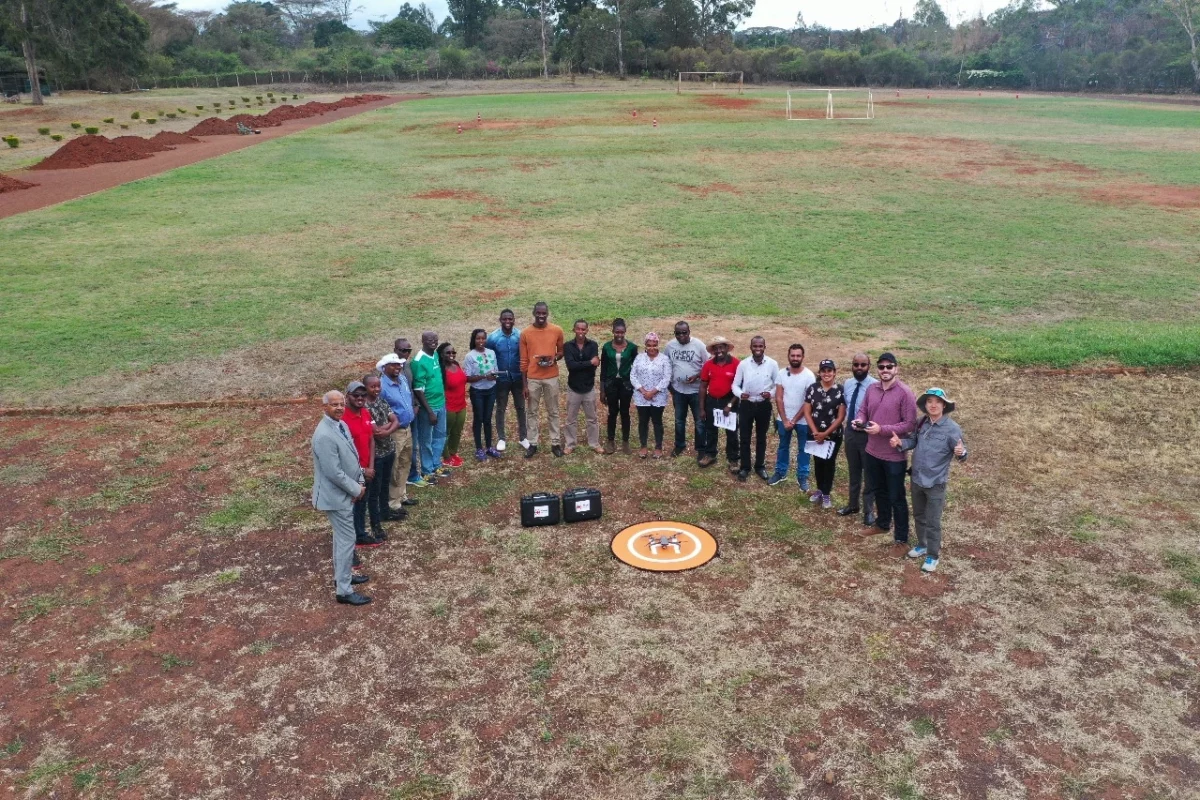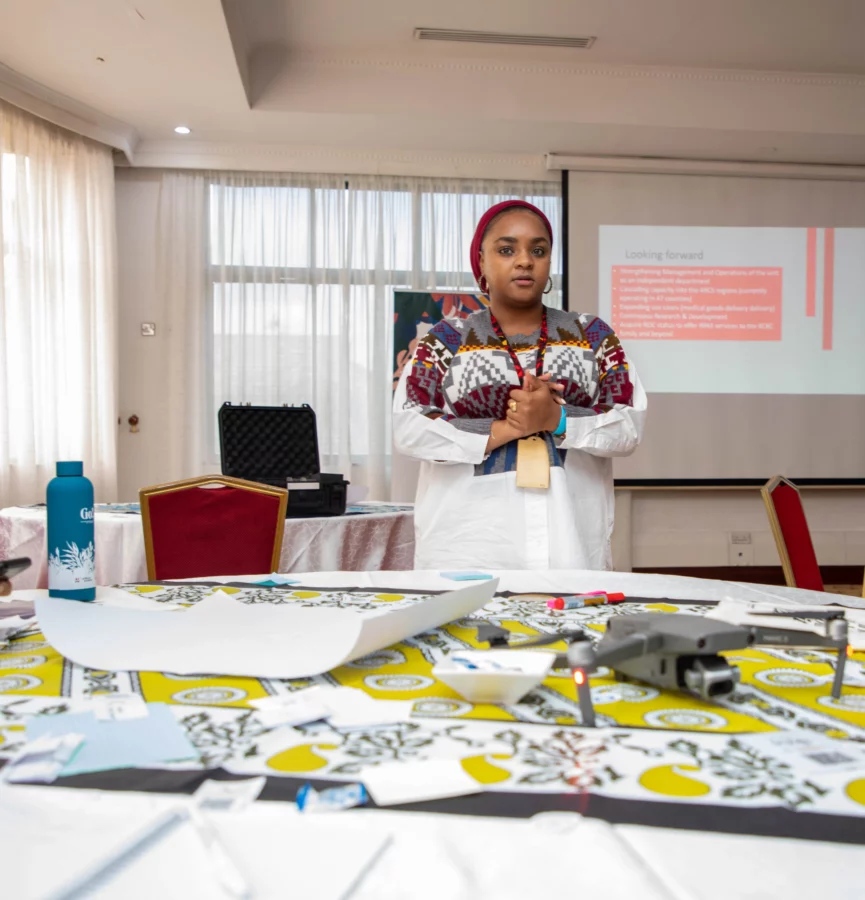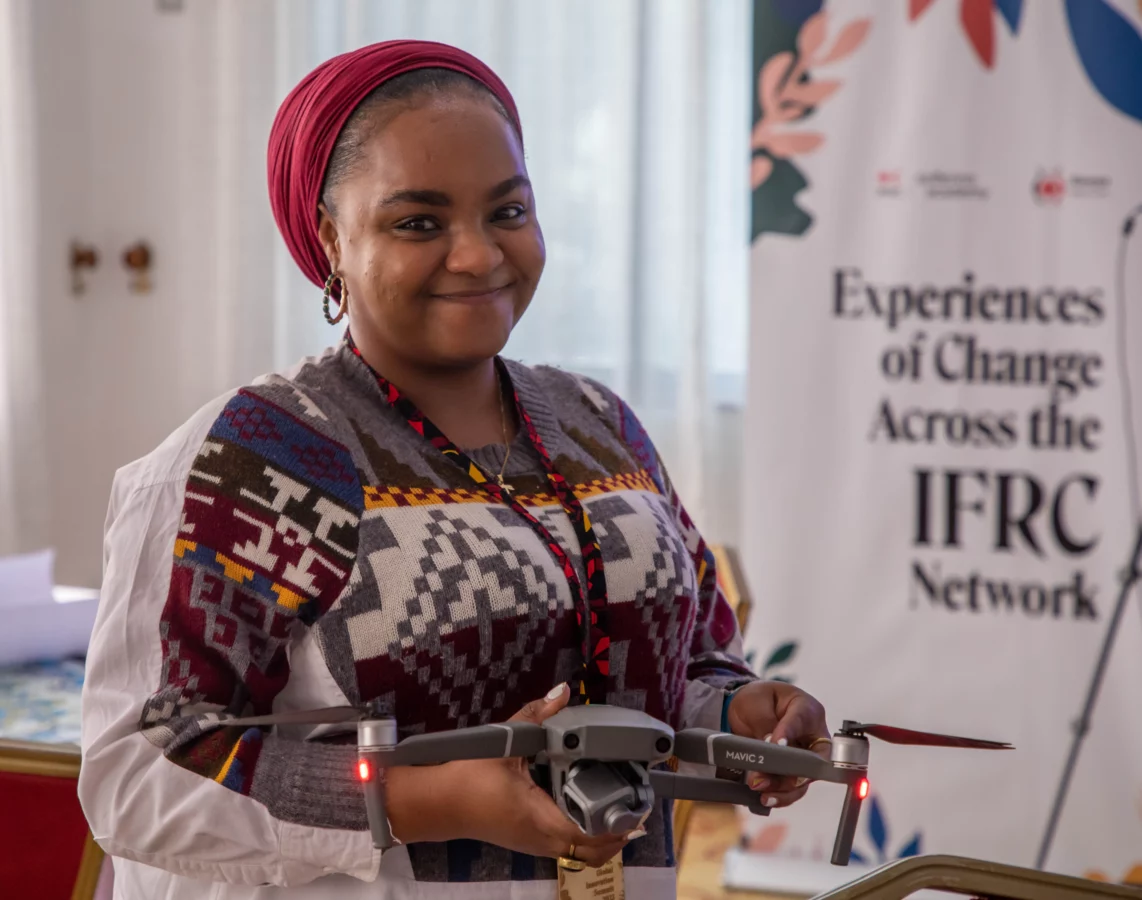Kenya Red Cross Society (KRCS) has embraced cutting-edge technology to enhance its disaster management and humanitarian aid operations.
In a groundbreaking move, KRCS established a Remotely Piloted Aircraft System (RPAS) unit in 2019, utilizing drones for a wide range of applications including search and rescue missions, risk mapping, videography, imagery, and cargo delivery.
These drones have proven to be invaluable assets, providing efficient and high-resolution solutions that enable responders to gain a comprehensive understanding of risks and develop effective crisis-resolution strategies.
The RPAS unit has significantly contributed to improving disaster preparedness in Kenya. Drones equipped with state-of-the-art technology offer responders a clear and accurate visual representation of the risks and consequences associated with various disasters.

Speaking during the IFRC Global Innovation Summit 2023, Swabira Abdulrazak, from the Kenya Red Cross Society explained how this high-resolution capability facilitates real-time data collection, aiding in decision-making processes and the optimal allocation of resources to mitigate the impact of disasters.
“The RPAS unit allows us to have a clear vision of the risks and consequences of a disaster, enabling us to adjust our crisis resolution strategies,” says Swabira Abdulrazak, from the Kenya Red Cross Society.

One of the major breakthroughs has been witnessed in disaster response efforts. Drones have been instrumental in developing highly detailed risk maps, providing crucial information to responders. During the COVID-19 pandemic, KRCS deployed drones to map and identify potential hotspots in Nakuru and Mukuru.
“With the help of drones, we were able to map and identify potential COVID-19 hotspots in Nakuru and Mukuru. This enabled us to organize targeted disinfection efforts and community awareness actions, effectively curbing the spread of the virus,” says Swabira.
Moreover, RPAS technology allows for safe remote assessments after natural disasters, minimizing risks to volunteers and community members while providing precise information for efficient response strategies.
Community resilience is another key area where drones have made a significant impact. Traditional disaster assessments often expose volunteers and community members to additional risks. However, with the deployment of RPAS, remote evaluations can be conducted safely, gathering accurate and detailed information without jeopardizing lives.
This data plays a vital role in guiding community resilience efforts, enabling KRCS to provide timely and appropriate assistance to affected areas. Drones offer unparalleled advantages in assessing the extent of damage and identifying critical needs for immediate relief interventions.
“Through data collection using drones, we can gather valuable insights for agricultural and environmental purposes. This enables us to implement targeted strategies to mitigate the impact of natural disasters, enhance agricultural productivity, and preserve the environment,” Swabira explains.

Mitigating natural disasters is yet another area where drones prove their worth. KRCS employs RPAS for data collection in agricultural and environmental contexts, gathering vital information that would otherwise be difficult to obtain.
The drones provide insights into factors such as soil conditions, vegetation health, and resource management, empowering KRCS teams to implement targeted strategies to mitigate the impact of natural disasters, enhance agricultural productivity, and preserve the environment.
Read also: Embracing Digital Transformation in Humanitarian Initiatives
KRCS has also collaborated with external organizations to amplify its impact. The RPAS unit worked in partnership with the Food and Agriculture Organization (FAO) during the Desert Locust invasion, assessing the efficacy of control efforts and the impact of the invasion on agriculture, livestock, and natural resource-based livelihoods.
Additionally, in collaboration with the MasterCard Foundation, KRCS utilized drones for disinfection and community awareness activities during the COVID-19 pandemic.
In an exciting development, Zipline Kenya, a renowned drone delivery company, is looking forward to expanding its drone operations with the Kenya Red Cross Society to include deliveries in line with humanitarian support, to ensure the timely and efficient delivery of medical supplies.
These deliveries will include vaccines, infusions, blood products, and more. With their expertise in robotics and autonomy, Zipline Kenya designs, manufactures, and operates an automated delivery system, guaranteeing equal access to healthcare services for all.

The integration of drone technology within KRCS’s disaster management and humanitarian aid efforts has brought about a transformative change.
With drones such as DJI Mavic 2 Pro, DJI Enterprise 2, DJI Agras T-16, and Wingtraone Gen II, KRCS has been able to enhance mapping, risk assessment, disaster response, agricultural productivity, and surveying capabilities.
By harnessing the power of drones, the Kenya Red Cross Society continues to strengthen its capacity to respond effectively to crises, mitigate the impact of natural disasters, and safeguard the well-being of communities across Kenya.
This groundbreaking technology paves the way for a future where drones play a vital role in humanitarian operations, improving the efficiency and effectiveness of aid delivery.
Subscribe to Switch TV
















